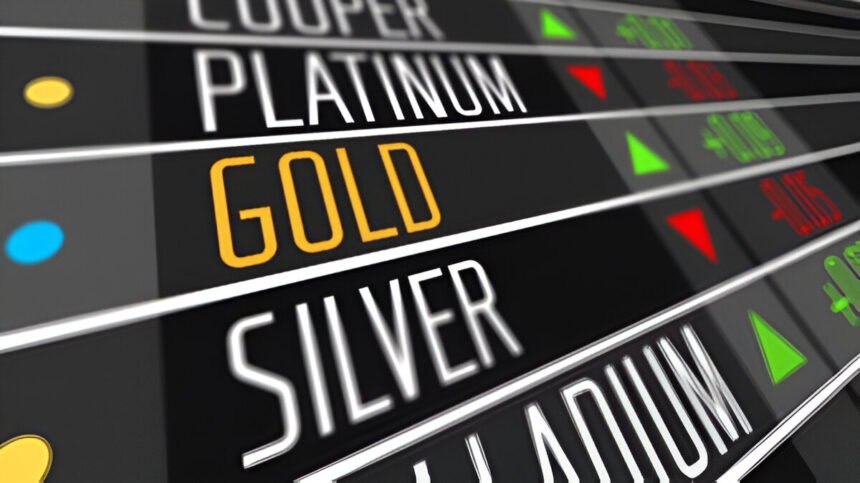The recent developments are not just the end of a conflict but perhaps the beginning of a tectonic shift in the global order. This shift is already affecting global markets. In today’s Gold Price Analysis, we saw the gold price (XAU/USD) plunge as financial markets witnessed a dramatic shift in investor preference. On one side, the precious metal, gold, found itself on the defensive, shedding over 2% to languish near its lowest point in a month, trading around $3,255 per ounce. On the other side of the spectrum, optimism surged, propelling major U.S. stock indices to breathtaking new record highs. This is a classic example of market rotation, demonstrating a resurgence of the appetite for risk.
This pivot away from the perceived safety of gold and into the exhilarating returns of equity markets paints a vivid picture of current investment sentiment. What’s driving this bold move, and what does it mean for the venerable yellow metal? Let’s uncover the forces at play.
The Swift Retreat of Gold Prices
Today’s session saw a notable pullback in gold prices, with the metal experiencing its second consecutive weekly decline, currently down nearly 3% for the week. This sharp drop, bringing it to a one-month low, indicates a decisive move by market participants away from bullion. When traders and investors are “jamming their cash” into riskier assets, it suggests a reduced need for the traditional security that gold offers.
This shift isn’t just about day-to-day fluctuations only; it reflects a broader change in how the market perceives risk and reward, especially with global uncertainties seemingly fading into the background.
The Roar of Risk Appetite: Why Stocks Are Soaring
While gold faced headwinds, U.S. stock indices enjoyed a phenomenal day. Both the S&P 500 and the Nasdaq Composite surged to fresh all-time record highs. This impressive performance signals a resurgence of risk appetite among investors, who are now more comfortable betting on economic growth and corporate earnings. Several factors are fueling this equity rally:
Anticipation of Rate Cuts
Even though the Federal Reserve held its federal funds rate steady at 4.25%-4.50% in its June meeting – Trading Economics, the market remains optimistic about potential rate cuts later in the year, possibly as early as July or September. Lower interest rates typically make borrowing cheaper for businesses and boost corporate profits, making stocks more appealing.
Easing Geopolitical Worries
As we’ll discuss, a calmer global outlook is playing a significant role in this risk-on shift.
Good Inflation Data
The Fed’s preferred inflation gauge, Personal Consumption Expenditures (PCE) price index for May 2025 was released today. While the Core PCE rose slightly more than expected at 2.7% year-over-year (vs. 2.6% forecast), and the headline PCE came in at 2.3% YoY, investors seem to be interpreting this as “good enough.” It’s not so high that it demands immediate Fed tightening but still reflects some economic activity. This nuanced outcome provides some reassurance, supporting the idea that the Fed might still move toward easing later this year.
This robust move into equities is clearly at the expense of defensive assets. We’re seeing declines not just in gold price, but also in government bonds (Treasuries) and even traditionally safe currencies like the Japanese Yen, as capital seeks out higher potential returns elsewhere.
A Calmer Global Outlook Dulls Gold’s Shine
A significant contributor to the current gold market sentiment is the perceived de-escalation of global tensions. Gold thrives on uncertainty, whether it’s economic instability or geopolitical conflict. However, recent developments suggest a more tranquil international environment:
Cooling War Jitters
Reports indicate that major conflict zones, particularly the Israel-Iran tensions, appear to have significantly de-escalated, with ceasefires largely holding and a notable absence of fresh, market-rattling headlines. This reduction in immediate “war jitters” removes a key pillar of gold’s safe-haven demand.
Tariff Plateaus
While trade disputes and tariffs always linger in the background, they are currently not dominating the headlines or causing immediate concern for global supply chains. This period of relative calm on the trade front further reduces the need for hedging against economic disruption through gold.
When the world feels “calmer,” investors are less inclined to hold hedges like gold and more inclined to chase the potential for growth and higher yields in equity markets. This shift in sentiment directly translates into selling pressure on the precious metal.
A Silver Lining (for Gold, Later)?
Despite its recent struggles, it’s worth noting that gold has had an exceptional year so far. Even with today’s pullback, the yellow metal has surged by a majestic 26% year-to-date, significantly outperforming the broad-based S&P 500 index, which is up a comparatively modest 5% (though it has rebounded impressively by 24% from its April lows).
This performance highlights gold’s dual nature: while it reacts to short-term shifts in risk appetite and monetary policy expectations, its underlying value as a long-term store of wealth and hedge against systemic risks remains intact.
Gold Price Analysis in the Dynamic Market Ahead
Today’s market action vividly illustrates the forces shaping investment decisions right now. The powerful surge in U.S. stock indices, fueled by fading geopolitical fears and optimism for future rate adjustments, has drawn capital away from the traditional safe haven of gold.
For investors, the current situation emphasizes the importance of staying attuned to both macroeconomic data, especially inflation reports like the PCE, and the ever-evolving geopolitical landscape. Although gold is taking a break, the market is clearly indicating that the appetite for risk remains strong for the time being. full swing.
A Final Thought from Our Desk
Financial markets often move like a tug-of-war between fear and greed, between the safety of holding on and the chance to take a risk. Today, it looks like investors are chasing opportunity. But things can change fast. The leaders in the market today might not be on top tomorrow.
We believe that monitoring the behavior of gold in comparison to riskier assets such as stocks and the signals from central banks becomes increasingly crucial. As we head further into 2025, staying informed will be key to understanding the bigger picture for gold and where its price might be headed.









